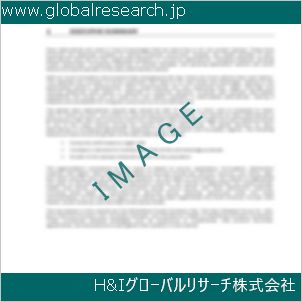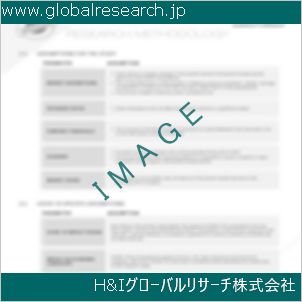Table of Contents
1 Industry Overview of Cuprousiodide
1.1 Definition and Specifications of Cuprousiodide
1.1.1 Definition of Cuprousiodide
1.1.2 Specifications of Cuprousiodide
1.2 Classification of Cuprousiodide
1.3 Applications of Cuprousiodide
1.3.1 Nuclear Application
1.3.2 Non-Nuclear Application
1.4 Industry Chain Structure of Cuprousiodide
1.5 Industry Overview and Major Regions Status of Cuprousiodide
1.5.1 Industry Overview of Cuprousiodide
1.5.2 Global Major Regions Status of Cuprousiodide
1.6 Industry Policy Analysis of Cuprousiodide
1.7 Industry News Analysis of Cuprousiodide
2 Manufacturing Cost Structure Analysis of Cuprousiodide
2.1 Raw Material Suppliers and Price Analysis of Cuprousiodide
2.2 Equipment Suppliers and Price Analysis of Cuprousiodide
2.3 Labor Cost Analysis of Cuprousiodide
2.4 Other Costs Analysis of Cuprousiodide
2.5 Manufacturing Cost Structure Analysis of Cuprousiodide
2.6 Manufacturing Process Analysis of Cuprousiodide
3 Technical Data and Manufacturing Plants Analysis of Cuprousiodide
3.1 Capacity and Commercial Production Date of Global Cuprousiodide Major Manufacturers in 2023
3.2 Manufacturing Plants Distribution of Global Cuprousiodide Major Manufacturers in 2023
3.3 R&D Status and Technology Source of Global Cuprousiodide Major Manufacturers in 2023
3.4 Raw Materials Sources Analysis of Global Cuprousiodide Major Manufacturers in 2023
4 Capacity, Production and Revenue Analysis of Cuprousiodide by Regions, Types and Manufacturers
4.1 Global Capacity, Production and Revenue of Cuprousiodide by Regions 2019-2024
4.2 Global and Major Regions Capacity, Production, Revenue and Growth Rate of Cuprousiodide 2019-2024
4.3 Global Capacity, Production and Revenue of Cuprousiodide by Types 2019-2024
4.4 Global Capacity, Production and Revenue of Cuprousiodide by Manufacturers 2019-2024
5 Price, Cost, Gross and Gross Margin Analysis of Cuprousiodide by Regions, Types and Manufacturers
5.1 Price, Cost, Gross and Gross Margin Analysis of Cuprousiodide by Regions 2019-2024
5.2 Price, Cost, Gross and Gross Margin Analysis of Cuprousiodide by Types 2019-2024
5.3 Price, Cost, Gross and Gross Margin Analysis of Cuprousiodide by Manufacturers 2019-2024
6 Consumption Volume, Consumption Value and Sale Price Analysis of Cuprousiodide by Regions, Types and Applications
6.1 Global Consumption Volume and Consumption Value of Cuprousiodide by Regions 2019-2024
6.2 Global and Major Regions Consumption Volume, Consumption Value and Growth Rate of Cuprousiodide 2019-2024
6.3 Global Consumption Volume and Consumption Value of Cuprousiodide by Types 2019-2024
6.4 Global Consumption Volume and Consumption Value of Cuprousiodide by Applications 2019-2024
6.5 Sale Price of Cuprousiodide by Regions 2019-2024
6.6 Sale Price of Cuprousiodide by Types 2019-2024
6.7 Sale Price of Cuprousiodide by Applications 2019-2024
6.8 Market Share Analysis of Cuprousiodide by Different Sale Price Levels
7 Supply, Import, Export and Consumption Analysis of Cuprousiodide
7.1 Supply, Consumption and Gap of Cuprousiodide 2019-2024
7.2 Global Capacity, Production, Price, Cost, Revenue, Supply, Import, Export and Consumption of Cuprousiodide 2019-2024
7.3 USA Capacity, Production, Price, Cost, Revenue, Supply, Import, Export and Consumption of Cuprousiodide 2019-2024
7.4 EU Capacity, Production, Price, Cost, Revenue, Supply, Import, Export and Consumption of Cuprousiodide 2019-2024
7.5 China Capacity, Production, Price, Cost, Revenue, Supply, Import, Export and Consumption of Cuprousiodide 2019-2024
7.6 Japan Capacity, Production, Price, Cost, Revenue, Supply, Import, Export and Consumption of Cuprousiodide 2019-2024
8 Major Manufacturers Analysis of Cuprousiodide
8.1 Manufacturer One
8.1.1 Company Profile
8.1.2 Product Picture and Specifications
8.1.2.1 Type I
8.1.2.2 Type II
8.1.2.3 Type III
8.1.3 Capacity, Production, Price, Cost, Gross and Revenue
8.1.4 Contact Information
8.2 Manufacturer Two
8.2.1 Company Profile
8.2.2 Product Picture and Specifications
8.2.2.1 Type I
8.2.2.2 Type II
8.2.2.3 Type III
8.2.3 Capacity, Production, Price, Cost, Gross and Revenue
8.2.4 Contact Information
8.3 Manufacturer Three
8.3.1 Company Profile
8.3.2 Product Picture and Specifications
8.3.2.1 Type I
8.3.2.2 Type II
8.3.2.3 Type III
8.3.3 Capacity, Production, Price, Cost, Gross and Revenue
8.3.4 Contact Information
8.4 Manufacturer Four
8.4.1 Company Profile
8.4.2 Product Picture and Specifications
8.4.2.1 Type I
8.4.2.2 Type II
8.4.2.3 Type III
8.4.3 Capacity, Production, Price, Cost, Gross and Revenue
8.4.4 Contact Information
8.5 Manufacturer Five
8.5.1 Company Profile
8.5.2 Product Picture and Specifications
8.5.2.1 Type I
8.5.2.2 Type II
8.5.2.3 Type III
8.5.3 Capacity, Production, Price, Cost, Gross and Revenue
8.5.4 Contact Information
…
9 Marketing Trader or Distributor Analysis of Cuprousiodide
9.1 Marketing Channels Status of Cuprousiodide
9.2 Traders or Distributors with Contact Information of Cuprousiodide by Regions
9.3 Ex-work Price, Channel Price and End Buyer Price Analysis of Cuprousiodide
9.4 Regional Import, Export and Trade Analysis of Cuprousiodide
10 Industry Chain Analysis of Cuprousiodide
10.1 Upstream Major Raw Materials Suppliers Analysis of Cuprousiodide
10.1.1 Major Raw Materials Suppliers with Contact Information Analysis of Cuprousiodide
10.1.2 Major Raw Materials Suppliers with Supply Volume Analysis of Cuprousiodide by Regions
10.2 Upstream Major Equipment Suppliers Analysis of Cuprousiodide
10.2.1 Major Equipment Suppliers with Contact Information Analysis of Cuprousiodide
10.2.2 Major Equipment Suppliers with Product Pictures Analysis of Cuprousiodide by Regions
10.3 Downstream Major Consumers Analysis of Cuprousiodide
10.3.1 Major Consumers with Contact Information Analysis of Cuprousiodide
10.3.2 Major Consumers with Consumption Volume Analysis of Cuprousiodide by Regions
10.4 Supply Chain Relationship Analysis of Cuprousiodide
11 Development Trend of Analysis of Cuprousiodide
11.1 Capacity, Production and Revenue Forecast of Cuprousiodide by Regions and Types
11.1.1 Global Capacity, Production and Revenue of Cuprousiodide by Regions 2024-2029
11.1.2 Global and Major Regions Capacity, Production, Revenue and Growth Rate of Cuprousiodide 2024-2029
11.1.3 Global Capacity, Production and Revenue of Cuprousiodide by Types 2024-2029
11.2 Consumption Volume and Consumption Value Forecast of Cuprousiodide by Regions, Types and Applications
11.2.1 Global Consumption Volume and Consumption Value of Cuprousiodide by Regions 2024-2029
11.2.2 Global and Major Regions Consumption Volume, Consumption Value and Growth Rate of Cuprousiodide 2024-2029
11.2.3 Global Consumption Volume and Consumption Value of Cuprousiodide by Types 2024-2029
11.2.4 Global Consumption Volume and Consumption Value of Cuprousiodide by Applications 2024-2029
11.3 Supply, Import, Export and Consumption Forecast of Cuprousiodide
11.3.1 Supply, Consumption and Gap of Cuprousiodide 2024-2029
11.3.2 Global Capacity, Production, Price, Cost, Revenue, Supply, Import, Export and Consumption of Cuprousiodide 2024-2029
11.3.3 USA Capacity, Production, Price, Cost, Revenue, Supply, Import, Export and Consumption of Cuprousiodide 2024-2029
11.3.4 EU Capacity, Production, Price, Cost, Revenue, Supply, Import, Export and Consumption of Cuprousiodide 2024-2029
11.3.5 China Capacity, Production, Price, Cost, Revenue, Supply, Import, Export and Consumption of Cuprousiodide 2024-2029
11.3.6 Japan Capacity, Production, Price, Cost, Revenue, Supply, Import, Export and Consumption of Cuprousiodide 2024-2029
12 New Project Investment Feasibility Analysis of Cuprousiodide
12.1 New Project SWOT Analysis of Cuprousiodide
12.2 New Project Investment Feasibility Analysis of Cuprousiodide
13 Conclusion of the Global Cuprousiodide (CAS 7681-65-4) Industry 2024 Market Research Report
| ※参考情報 ヨウ化第一銅(Copper(I) iodide、CAS 7681-65-4)は、化学式 CuI で表される無機化合物です。この化合物は、銅とヨウ素から構成され、主に白色または黄色がかった固体として存在します。ヨウ化第一銅は、さまざまな化学的特性と物理的特性を持ち、多くの用途で利用されています。 ヨウ化第一銅は、非常に重要な化合物であり、主に半導体材料や光学デバイスに関連する技術で注目されています。この化合物は、含有した銅の oxidation state が +1 であるため、ヨウ化第二銅(CuI₂)とは異なります。要するに、ヨウ化第一銅は一価の銅を持つため、独自の電子的性質を持っています。また、ヨウ化第一銅は結晶構造においても独特の特徴を持っており、通常は立方体対称性を持っています。 ヨウ化第一銅の物理的な特性としては、室温での白色固体であり、昇華性を持つことが挙げられます。加熱すると昇華し、蒸気状になることが可能です。これにより、材料プロセスにおいて特定の条件下で利用できます。また、ヨウ化第一銅は水に対しては非常に不溶性ですが、有機溶媒においては溶解することがあります。 ヨウ化第一銅の用途は多岐にわたります。一つは、光学デバイスにおける半導体材料としての利用です。特に、ヨウ化第一銅は、太陽電池や発光ダイオード(LED)のようなエレクトロニクス・光学デバイスに必要な特性を提供します。また、低バンドギャップ半導体としての特性を通じ、さまざまな電子的応用が開かれています。このため、ナノテクノロジーの分野においても高い関心が寄せられています。 さらに、ヨウ化第一銅は医療やバイオテクノロジー分野での応用が期待されています。特に、抗菌特性を持つことから、さまざまな生物医学的な利用が考えられています。ヨウ化第一銅は、特に感染症の治療や消毒の材料として研究されています。これにより、微生物に対する効果的なアプローチとしての利用が進められています。 化学的には、ヨウ化第一銅の合成方法は多岐にわたります。一般的な方法として、銅(II)塩をヨウ化物と反応させて生成することが挙げられます。この反応により、銅(I)イオンとヨウ素が結合してヨウ化第一銅が生成されます。また、ヨウ化第一銅を合成する際には、反応条件や溶液の pH、温度などの要因が重要であり、それによって生成物の純度や結晶形が変化します。 近年、ヨウ化第一銅は環境技術の分野でも注目されつつあります。特に、環境に優しい触媒としての研究が進められています。ヨウ化第一銅は、特定の化学反応において価値のある触媒として機能し、無駄なエネルギー消費を削減することが期待されています。このような研究は、持続可能な開発目標に向けた努力の一環として、多くの研究者によって進められています。 さらに、ヨウ化第一銅は、ナノ粒子や薄膜の形状にすることで、その特性をさらに活用することができます。ナノスケールでの物質は、通常のマクロサイズの材料とは異なり、特異な物理的・化学的性質を示します。これにより、新しい機能性材料の開発が進められています。 ヨウ化第一銅は、その特性からさまざまな分野にわたる研究や開発が進められており、今後の技術革新においても重要な役割を果たすことが期待されています。半導体、光学、医療、環境技術など、幅広い分野での利用が進展しつつあり、さらに新たな応用の可能性が探求されています。このように、ヨウ化第一銅は化学において非常に多才な化合物であり、多くの研究者によって魅力的な素材として注目されています。 |
❖ 免責事項 ❖
http://www.globalresearch.jp/disclaimer












